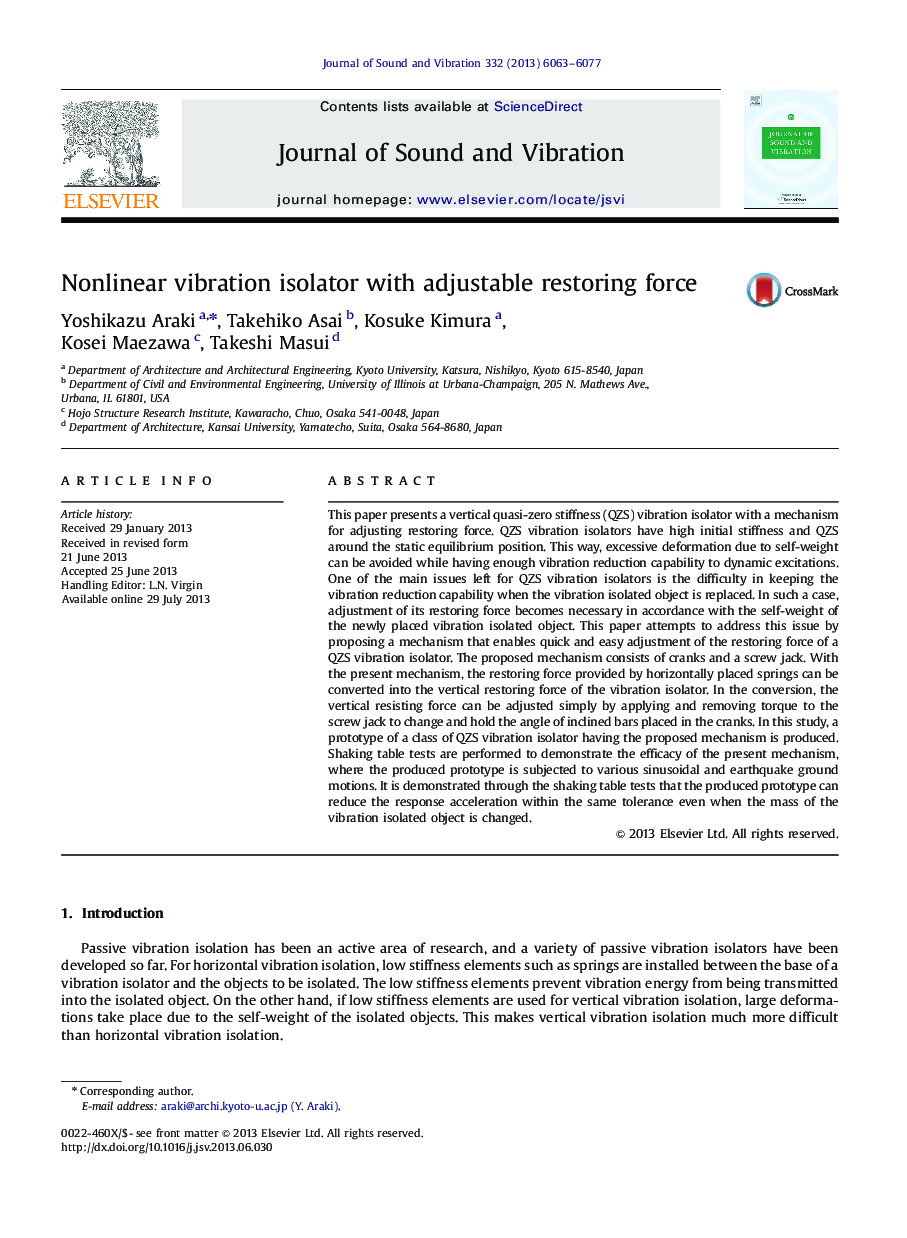| Article ID | Journal | Published Year | Pages | File Type |
|---|---|---|---|---|
| 287730 | Journal of Sound and Vibration | 2013 | 15 Pages |
•Vertical vibration isolator with adjustable restoring force mechanism is proposed.•Restoring force can be easily adjusted in accordance with mass of isolated object.•Efficacy of the proposed mechanism is demonstrated through shaking table tests.•Same vibration reduction was confirmed for 3 isolated objects with different mass.•Comparisons of test and simulation results validate the derived design equations.
This paper presents a vertical quasi-zero stiffness (QZS) vibration isolator with a mechanism for adjusting restoring force. QZS vibration isolators have high initial stiffness and QZS around the static equilibrium position. This way, excessive deformation due to self-weight can be avoided while having enough vibration reduction capability to dynamic excitations. One of the main issues left for QZS vibration isolators is the difficulty in keeping the vibration reduction capability when the vibration isolated object is replaced. In such a case, adjustment of its restoring force becomes necessary in accordance with the self-weight of the newly placed vibration isolated object. This paper attempts to address this issue by proposing a mechanism that enables quick and easy adjustment of the restoring force of a QZS vibration isolator. The proposed mechanism consists of cranks and a screw jack. With the present mechanism, the restoring force provided by horizontally placed springs can be converted into the vertical restoring force of the vibration isolator. In the conversion, the vertical resisting force can be adjusted simply by applying and removing torque to the screw jack to change and hold the angle of inclined bars placed in the cranks. In this study, a prototype of a class of QZS vibration isolator having the proposed mechanism is produced. Shaking table tests are performed to demonstrate the efficacy of the present mechanism, where the produced prototype is subjected to various sinusoidal and earthquake ground motions. It is demonstrated through the shaking table tests that the produced prototype can reduce the response acceleration within the same tolerance even when the mass of the vibration isolated object is changed.
